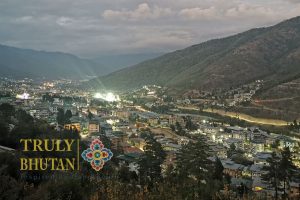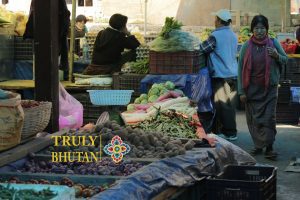Western Bhutan is the prominent division of Bhutan; consisting of the capital Thimphu as well as the only international airport in Paro, the main entry point to the country. The flight to Paro is both captivating and ecstatic, as once you enter Bhutan the charming scenery will welcome you. The everlasting mountains of Paro unfold to the kingdom’s widest valley that spreads alongside the pristine Pa Chhu River, with luxuriant rice fields and sceneries adorned with prayer flags and stupas.

Over the decades, ‘Paro’ the place of natural elegance and distinctive traditional framework, not only remains the home for the country’s sole international airport and various flora and fauna but also remains the most active site for tourism and business.
Not just because Paro is an ideal place to spend your holidays in a splendid resort featured with spas or a pool and purchase handmade souvenirs.
It’s because Paro serves as the hotspot for numerous sight sceneries, trek and camping areas, iconic ancient monuments like sacred Taktsang Monastery (The Tiger’s Nest), and Ta Dzong (The National Museum) displaying the country’s most ancient artifacts, traditional weaponry, and paintings.
Moreover, this place greets you with traditional Bhutanese buildings with multiple restaurants and shops, which provide the essence of traditional food and fashion in Bhutan. And hence, Paro is crowned as the epitome of withholding far more breathtaking places, suitable for a versatile traveler to explore and take back satisfying memories from the place of The Last Shangri La.
The expedition to Taktshang lists on top of the bucket list of all those who visit Bhutan. It is one of the prominent sacred landmarks of the country that bears the footprints of Guru Rimpoche from the 8th century to various modern travelers all around the globe. Gyalse Tenzin Rabgye built the monastery in the 17th century in the honor of Guru Rimpoche, who subdued the wicked minor deities and introduced Buddhism to Bhutan, thereby becoming the rightful deity of the kingdom.
Hence it also bears the name ‘Tiger’s Nest’ for it is believed that a tigress brought Guru to the caves in which he mediated.
As often it is said that the best view comes after the hardest climb, it might seem seemingly impossible to reach Taktsang, which is located on top of a 3000ft steep cliff and requires three hours of extensive walking or horse riding from the base camp. But the journey is worth the sweat you shed in enthusiasm to explore and experience. The structure of Taktshang is pretty impressive unlike the other monuments in the world. It consists of four main temples with golden roofs and eight caves. Accordingly, the interior of the temple is adorned with luxurious designs and idols and stairs carved out of rocks present there to connect almost all the traditional buildings.
Hence due to its extravagant beauty and spiritual tales, Paro Taktsang is another active hub for tourist visits and annual religious ceremonies.

The other town of western Bhutan includes Punakha, which is the ancient capital of Bhutan. Its elevation is 1,300m it is about two and a half hour drive from Thimphu across Dochula pass. After crossing the pass, one enters the warm fertile valley and wanders the flowing Aquamarine River leading to the Punakha Dzong, the second oldest fortress of Bhutan. Punakha Dzong was built in 1637 and remains the winter home of the clergy, headed by the chief Abbott, the Je Khenpo.
It is a bewildering example of traditional Bhutanese architecture and craftsmanship that rests between two rivers. The fortress was pence destroyed by fire and glacial floods but has been carefully restored to its medieval glory. Punakha is in a valley. Punakha has a subtropical climate, consequently, food grains, and vegetables, are grown in abundance here. A short drive up the valley is the Khamsum Yulley Chorten (Stupa), which was initially constructed in 1992.
As one further drives south of Punakha, one reaches the valley of Wangduephodrang at an elevation of 1,350m.
The previous old town consisting of a narrow street with single-storied shops is now replaced with an extravagant town. Wangduephodrang is the largest dzongkhag in the country, however, most region falls under a strictly protected area There is a Wangduephodrang Dzong (Fortress). It is on a steep ridge overlooking the highway fork to the east and south of the country. The picturesque valley of Phobjikha is another notable site for tourist visits and aesthetic nature photography.
The magnificent valley is home to the endangered species of black-necked cranes that migrate to Bhutan annually. Accordingly, every year the Black Necked Crane Festival is held in Phobjikha in order to protect, preserve and spread awareness about the endangered species.
